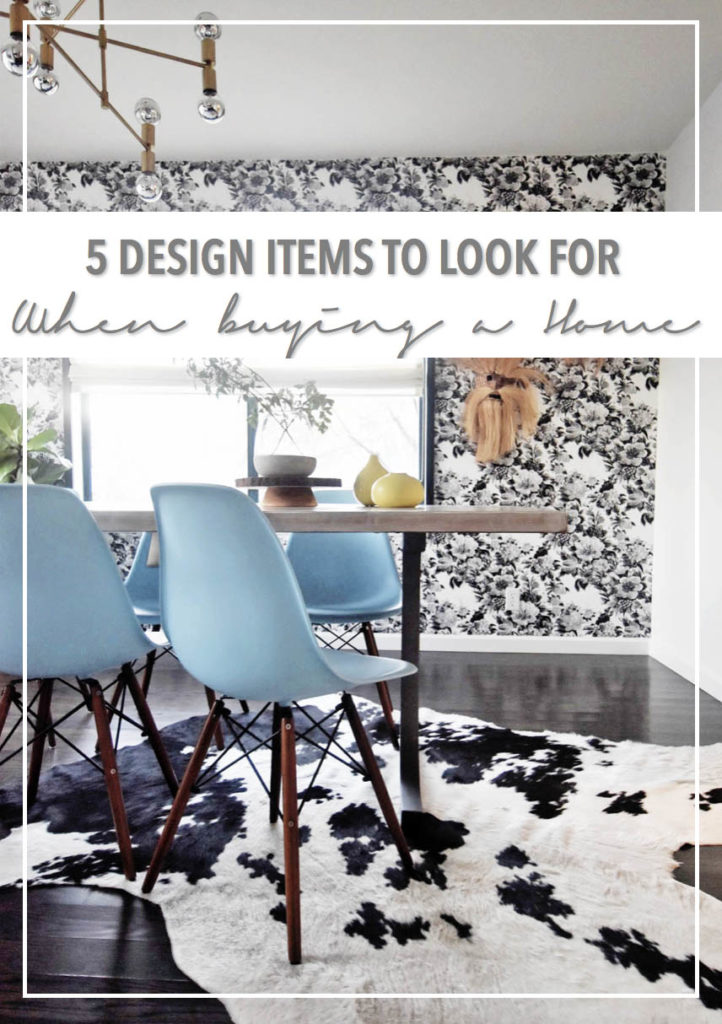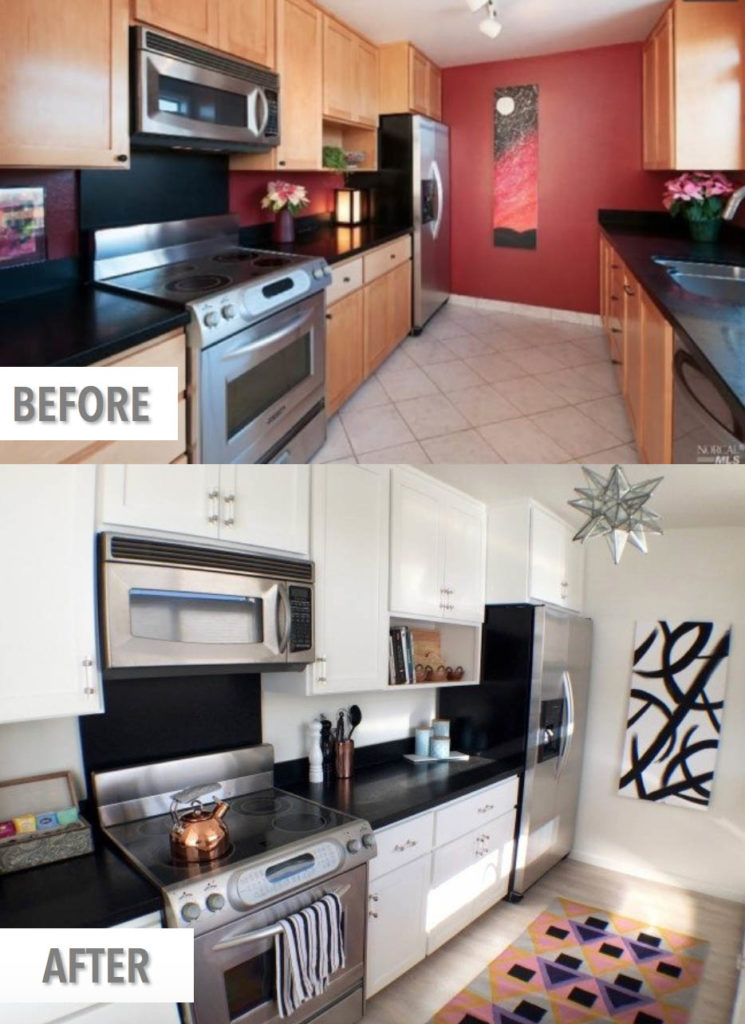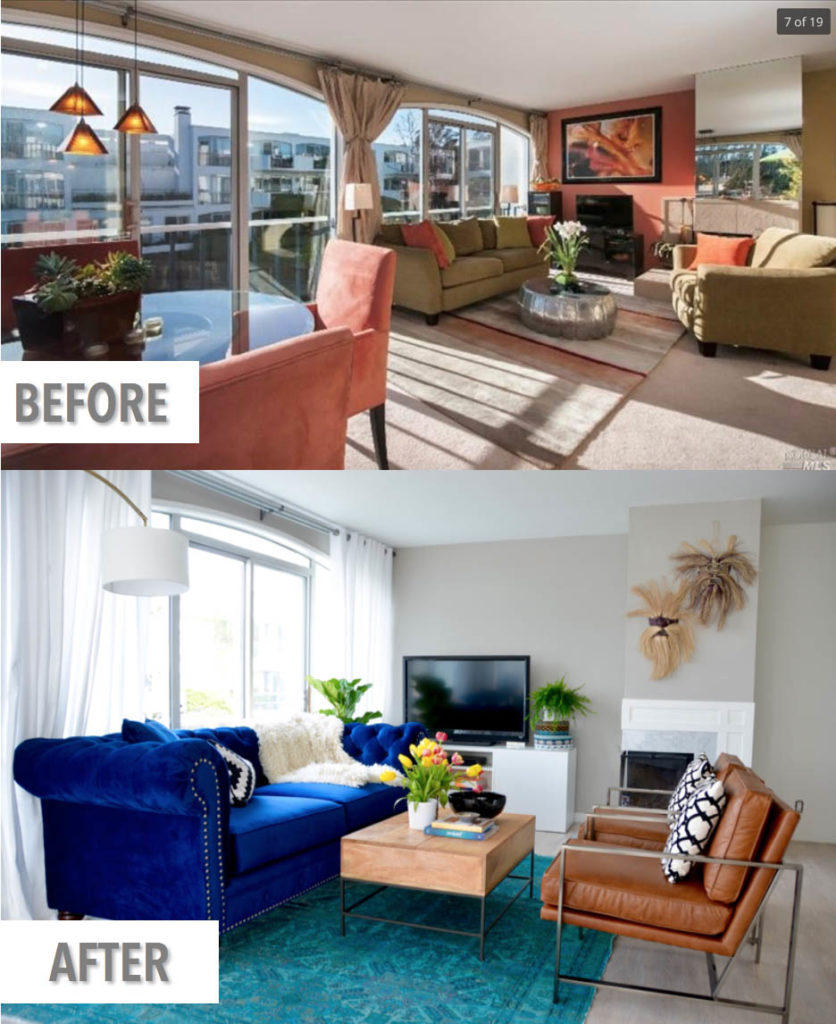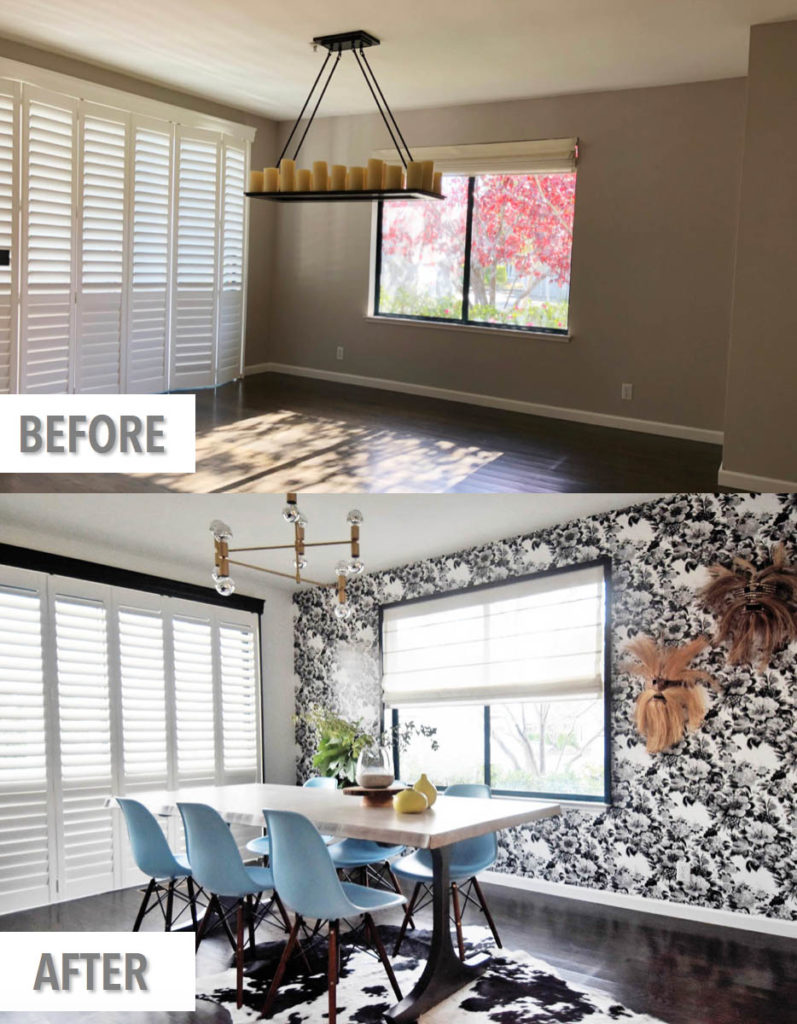Recently Mr. R and I bought our second home together, and we definitely have learned a thing or two about what to look design-wise for when buying a home. I’m don’t mean style-specific points like modern or victorian, but instead what to look for that’s already in the home that’s going to cost a bundle if you don’t like it already. We have had to deal with new flooring, carpets, window treatments, bathroom renovations, painting walls and cabinets, hardware, fireplace renovations and baseboard/moulding changes, electrical, light fixtures and more within the last 2 homes. We learned a lot about what to look for when analyzing a house for cosmetic renovations, as well as certain things that may help negotiation when buying. Here is my list of the top 5 design items to look for when buying a home!

#1 Flooring
Sounds obvious, but flooring can be a make or break to your renovation budget! If you go in to a home and immediately don’t like the floors, don’t just think it’s an easy few grand to replace. Depending on what is already there and what you want to replace them with, can cost an arm and a leg for both labor and supplies. Here are the questions to ask:
1. Is it solid hardwood? If so, chances are you can sand and re-finish to a darker color. You may be able to go a few shades lighter, but dark hardwood is never going to become bleached oak. Remember that dark floors may seem gorgeous but they show EVERYTHING. Every single hair, every single crumb. Personally I hate them, because I currently live with them and have a hand vacuum permanently glued to my right hand so I clean up every. single. day.
2. If it’s not solid hardwood, when was it installed? Engineered hardwood and Pergo type flooring has a 5-15 year life depending on the amount of moisture in the air or nearby, and sometimes you can see slight buckling in the panels when they have had access to moisture. Doesn’t mean they have to be immediately replaced, but it’s something to consider when you think about how long you plan on being in a home.
3. If you want to replace the floors, is there any tile that will need to be removed? Tile can cost a lot, demo-wise. Depending on how much tile you have, you might want to increase that reno budget. A little tile in an entry or a mudroom is fine, but if you’re entire kitchen is travertine, you might want to get an estimate first!
4. What’s under the carpet? We learned this the hard way. Carpet is relatively easy and inexpensive to install, and can be done in 1 day. However, make sure you ask or see if you can check what is under the carpet first! Our stairs had hardwood underneath, but we didn’t find out until we were halfway through demo. A good way to check is to lift up the AC/heating grates and lift up the carpet there. This is also a great way to check what type of wood flooring it is.

{An example of the large tiles in our kitchen that needed to be replaced. The demo for these plus the hallway cost 1/4 of the total bill!}
#2 Window Treatments
This is a much easier process to look for when buying a home. If you have a lot of windows, please please please consider what type of window treatments will work with a space. We had an entire wall of floor to ceiling windows in our last home, and while we were mesmerized by the amount of light the room had, the room got HOT during sunny days. Not hot days, sunny days. And drapes just didn’t cut it. You have to invest in full black out drapes which don’t look very nice, or install a very expensive ceiling to floor shade system. Again, take a picture and get a quote if you can!
The other thing I would do is make sure you get close to the windows when walking through the house and see if you can feel any drafts. Even the slightest bit of air can destroy your heating and AC bill, so it’s worth asking the broker if they have any information on what the monthly energy bills are.
#3 Windows and Lighting
Back to that second point, great light really is key in a home. There can be advantages and disadvantages to all exposures, but you have to make sure you go to each room and see where the light is coming from to make sure it works for you. In both our homes the bedroom windows face east, which means we get a lot of morning light which I love. But I despise black out shades and a dark room (since I will never know what time it is) so it works for me.
On the flip side, my living room only has a sliding door for natural light with southern exposure, which means it never gets very light in there. There is also no overhead lighting, which means lots of lamps (look around: are there switches already in place or do you manually have to turn each lamp on?).
Lastly, consider what furniture you already own and where you would like it to go. Huge beautiful windows are wonderful, but you might not have space to put your favorite bookshelf or your couch against the wall. What about a glare to the TV? None of these are deal-breakers, but they are things to consider if you move into a home with pre-existing furniture!

{The wall of windows that were beautiful but heated up the room}
#4 Check the Switches, Plugs, Ice Machine
Oy, some of these old homes have so many switches! Or none at all! And you can’t seem to ever figure out which one goes to what. After having repeated problems with switches in both our homes, my advice is to turn on every one you see. Are you annoying? Probably. But better to know now that actually none of the plugs or the switches in half of the kitchen work. Because that happened to us. And then we never checked the fridge to find out that while it did have a water dispenser, there was no actual water hookup to this portion of the kitchen, which rendered the ice machine and water dispenser useless. Did we survive? Of course. But you can bet that when I walked into the open house for our new home I pressed the water dispenser on the fridge. And even though I got water all over the kitchen floor I was happy to know it worked :)
Often when you flip on a switch you find it’s something entirely different than you thought- it could turn on a ceiling fan instead of a light fixture, or maybe it only turns on 1 of 4 hallway lights and the other 3 are on a different switch! All have happened, all are silly. Again, this is what the open house is for. Do your due diligence, and you will feel better about what shape the home is in!
#5 Ask what comes with the House
While the general rule is ‘if something is fixed into a wall’ then it’s part of a home, there are many sellers that sneakily take things with them when they leave. You may walk into a home you just bought and realize that the previous owner took all of the ceiling light fixtures! Or the bathroom mirrors! Or the drapery rods! Or weirdly… the towel bars (yes, I moved into a home where the towel bars in the powder room mysteriously went missing). And then all of a sudden you are scrambling because night one in your new home you have no light.
On the other hand, you may absolutely HATE a light fixture, and want it to be taken. Hey- if the seller loved it, better they take it with them and you can come in ready with a new one to install. These are all handy to know in negotiations, as sometimes a few mirrors, a light fixture or a built in TV can help move the needle one way or the other. If you find that the seller is passionate about keeping something, then let them have it! Better that they feel you are accommodating and understand the love and effort they put into their home, because some day you might want the same understanding.

{The light fixture I wish was removed prior to our arrival. Unlike in our previous home where the dining room fixture was taken!}
That’s it! Those are the top 5 design items I look for when buying a home. What do you think- what else would you add?


